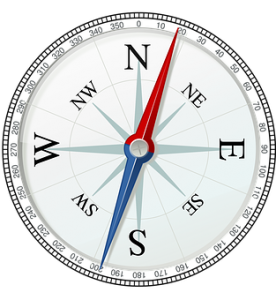Want cultural change? Get HUMAN
Want cultural change? Get HUMAN
It is no secret that cultural change can be challenging and that ‘winning hearts and minds’ can be the greatest challenge of all. Understanding behavioural responses to shifting or new cultures is critical to being able to support and drive change. So what can we learn from psychology about behaviour in relation to cultural interpretation?
During times of cultural change, many people will typically display five types of behaviour in response to it. Global Eloquence utilises the acronym HUMAN, HIDDEN, UNTIED, MINIMISED, ACCEPTED, and NAVIGATED to define and understand these response behaviours. The HUMAN Model is a lens that helps us to identify current attitudes towards a changing or new culture. Both individuals and organisations can progress along the continuum in order to achieve the best results and high functioning teams. So what do the five response behaviours and attitudes look like? Perhaps you see them in your own organisation?

The first position on the continuum is HIDDEN
HIDDEN represents a mind-set of denial and a limited grasp of cultural differences and appropriate behaviours that should be observed. Individuals currently on this position of the continuum have a disinterest in other cultures and will seek to avoid engagement altogether. They are likely to have little experience of other cultural groups and see no reason for transition from this mind-set.
When HIDDEN is present in the workplace, cultural change and engagement is often ignored. How can this affect a team or organisation overall? Well, one effect of this position is the impact on trust within teams and therefore the progression through Lencioni’s stages to achieve collective ‘results’. Quite simply, trust can-not begin to be addressed until individuals are moved from this position and mind-set and engage more fully.

The second position on the continuum is UNTIED
UNTIED represents a mind-set of evaluation, taking the form of an “us and them” perspective. This can either be from a defensive position (“we do it better than they do”) or the opposite (“they are so much better than us, why can’t we do it like them”). Both perspectives can be divisive and threaten results within the workplace.
When UNTIED is present in an organisation, silos are reinforced and unhealthy conflict is either evident or suppressed. This can be very disruptive to trust development and impact negatively on the engagement of others who are attempting to progress culture in a positive way. We see UNTIED response behaviours and attitudes every day in the news and the disruptive consequences that it has across the world.

The third position on the continuum is MINIMISATION
MINIMISATION is a stage where people concentrate only on the common factors between cultures or teams and lack understanding of the complexities and differences within them. Commonalities are used as a strategy for “the path of least resistance”. It is a survival strategy that dampens down many of the more subtle dynamics.
When MINIMISATION exists within organisations, minority groups are not heard. People may not feel comfortable challenging the norms and innovation and creativity can be affected. This can of course have a significant impact on commitment and accountability as many people can feel that there is little point in raising issues or concerns or in challenging the dominant status quo.

The fourth position on the continuum is ACCEPTANCE
ACCEPTANCE represents a more global mind-set whereby people are able to see complexities and nuances as well as the commonalities in both their own and other cultures. People within an ACCEPTANCE position are able to reflect on their historic culture and behaviours and reach a deeper understanding of cultural differences throughout change. However, this can lead to individuals struggling with reconciling behaviour in a changing culture or team if they believe that certain viewpoints are out of line with their own historic values. There is a ‘legacy ‘ mind-set that is being used as a frame of reference.
When ACCEPTANCE is present in organisations, all people are considered, heard and there is a willingness to engage. However, there can also be a struggle with expanding perspectives and accepting conflicting views, practices or behaviours. Once again this can have a negative impact on one’s ability to trust ‘the new way’ fully.

The fifth position on the continuum is NAVIGATION
NAVIGATION represents an individual’s ability to shift their cultural perspective and behaviour, by changing in an authentic and culturally appropriate way. NAVIGATION enables cultural bridging across organisations, teams and groups and a greater understanding of deeply rooted beliefs and practices.
When NAVIGATION exists in organisations, trust, conflict, commitment, accountability and results can be focused on collectively with a mind-set typically focused on learning strategies to adapt and change. However, problems may arise if people express intolerance towards those who have not yet reached this position on the continuum and could result in people with NAVIGATION understanding being marginalised in their Company.

Summary
The HUMAN model helps individuals and teams understand themselves and others in relation to cultural change and development. It shows the typical positions that people hold during transitions to new cultures and explains the consequences of each response behaviour and attitude. The challenge remains in encouraging and supporting people through to the point of NAVIGATION. The steps and strategies to move through the continuum require commitment, focus and expertise. ‘Winning hearts and minds’ remains the key challenge during any change or transition and the HUMAN model can help individuals and teams understand and adapt.
How is the HUMAN model delivered?
Workshops
Workshops develop essential skills to enable individuals, teams, managers and businesses to work more effectively across cultures and globally. The sessions explore cultural differences and how these shape worldviews, values, beliefs and behaviour. The pitfalls and debilitating dynamics that manifest in situations when these dimensions are not managed are also clearly examined.
The sessions are interactive and based around characters tailored to reflect the experience of the participating group. Through these characters, individuals are able to explore solutions, and examine challenges. By learning to understand the different perspectives along The HUMAN Model, individuals learn both how to NAVIGATE and support others in working more effectively within changing cultures.
